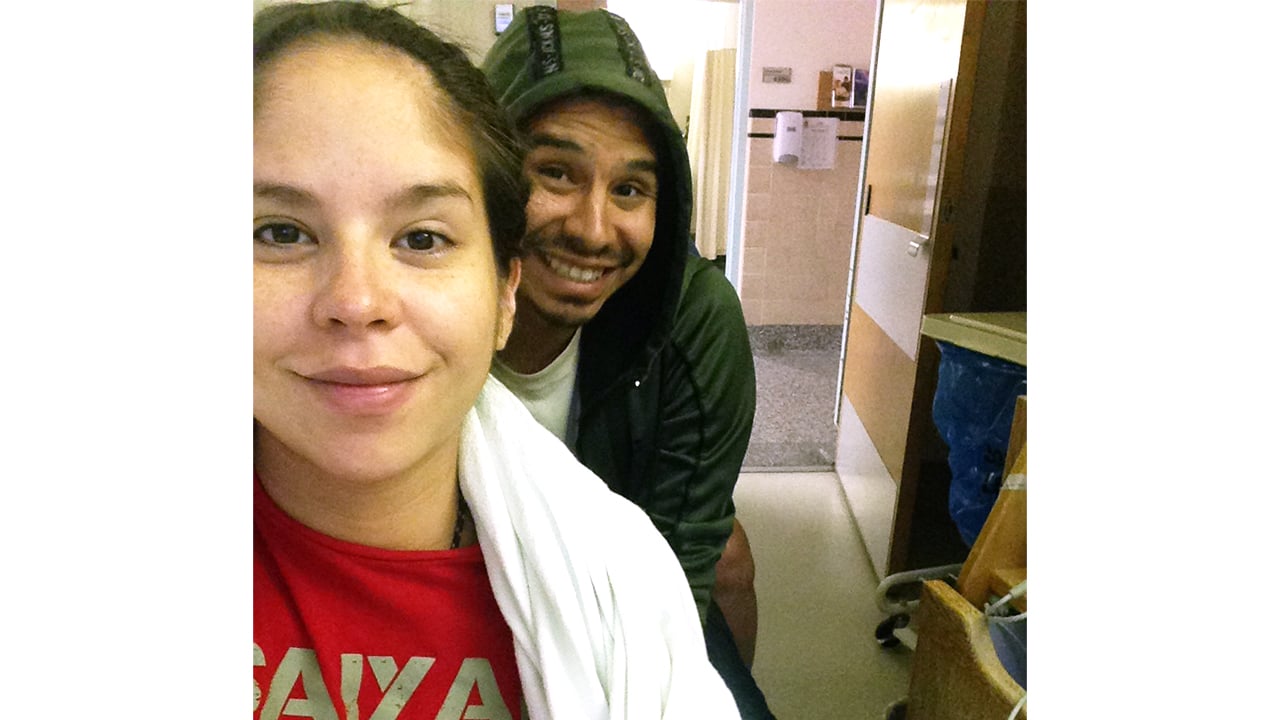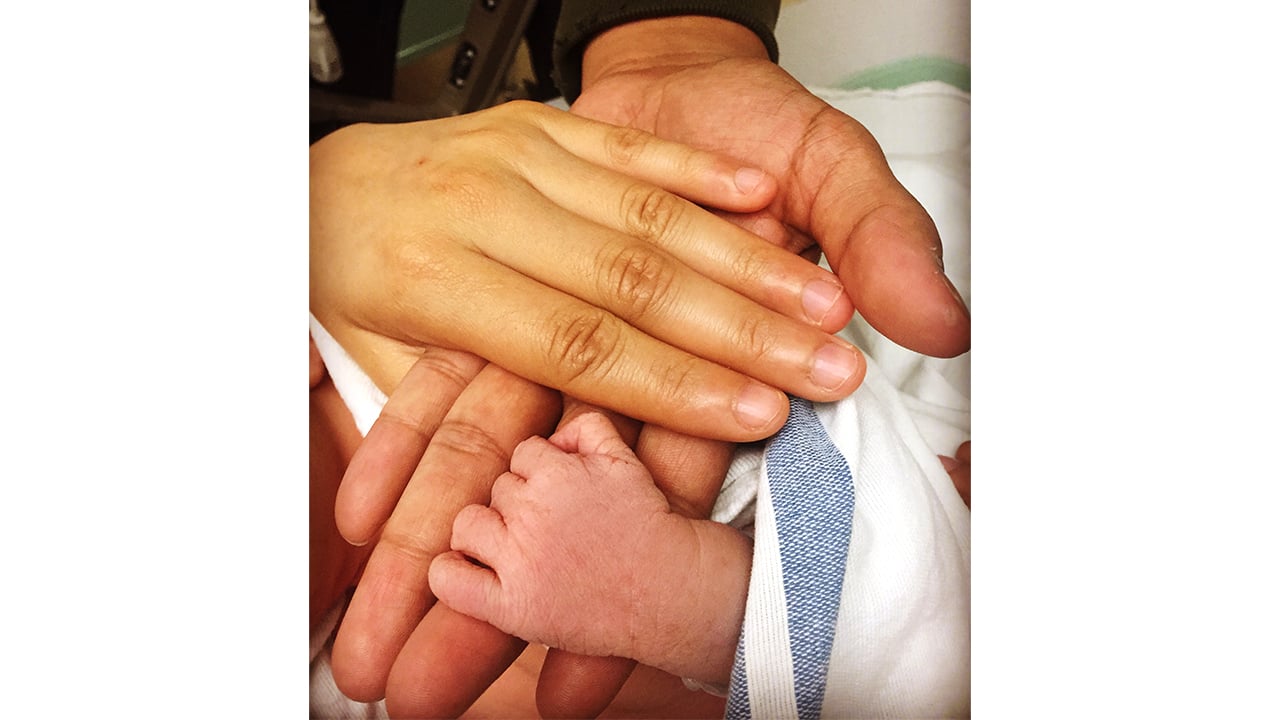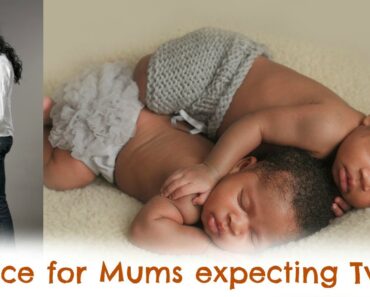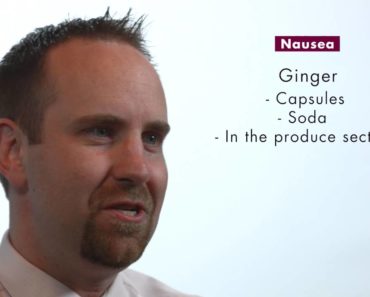Editor’s note: The following birth story is compelling, raw and emotional. It does contain some graphic details related to childbirth and delivery-room trauma.
***
When I found out I was pregnant, I knew I wanted a home birth. I’m an Anishinaabe woman from Pawgwasheeng (Pays Plat First Nation) in Northwestern Ontario, and I now live on Poundmaker Cree Nation, close to North Battleford, Saskatchewan.
In our traditional kinship systems, pregnancy and birth are considered sacred times. Prior to the pregnancy is even considered sacred, as families are to plan, pray, and prepare for the baby years in advance. But because of the impacts of colonialism, many of these teachings have been forgotten.
Along with these shifts and changes, Indigenous birthing mothers often experience negative treatment by the medical system. And it’s not just small micro-aggressions, or doctors who show anti-Indigenous bias—extensive forced or coerced sterilization of Indigenous women and girls dates back to the 1970s, or earlier. The International Justice Resource Centre has published reports on more recent cases in the province of Saskatchewan between 2008 and 2012 (and some newer research has found it continues to happen today).
For me, living on land that colonialism has labelled “rural Saskatchewan,” I knew that in colonial medical institutions, the sacredness of Indigenous birthing is more often than not neglected, dismissed, and abandoned. I wanted to do my best to override that neglect and follow our traditional birth practices. I envisioned myself revitalizing what I knew my mother never had a chance to practise.
I called the Midwife Association of Saskatchewan to ask about opting for a home birth with a midwife. Due to a shortage of midwives in general, the idea of even having one present at a hospital birth was out of the question.
“You are 181 on the waitlist,” I was told. Then they asked me where I was located.
“Poundmaker Cree Nation,” I said.
“Where is that?” they asked.
“About 40 minutes outside North Battleford.” This is the location of the closest hospital to us.
The representative from the midwife association then told me that it’s not recommended to have a home birth that far from a hospital, in case anything happens to you or the baby.
I quickly thanked them and hung up. As I put my phone down, my whole body felt hot.
A rush of rage swept through me. We couldn’t get a midwife based on where we lived, and finding a birth-support worker who shared our cultural background—or even just honoured it—was next to impossible. It was rage at the reality that we, as Indigenous mothers, do not have the freedom to birth how we want to, on our own homelands, with our own health-care systems. It was the rage toward all of the stories I had heard from countless women in my life who have had unwarranted hysterectomies, recommended by colonial doctors. It was the rage at the reality of how much colonialism has intervened on the quality of our relationship with our own birthing practices.
Because we live in an area with high levels of active racism against us, my partner and I knew it was time to discuss all the scenarios that might come up while giving birth in a hospital. Knowing my fears, my partner looked at me and said, “We need a safety plan for any outcome that could happen in that hospital.”
I nodded my head in agreement.
“If a social worker attempts to come in and apprehends the baby solely because we’re Indigenous, we need to know what to do,” he said. He was referring to what’s called “birth alerts,” and they’re a common tool of colonization that disrupts the kinship bonds within Indigenous families. Although some provinces are making shifts and adjustments in regards to the practice, in Manitoba alone, a minimum of one Indigenous child is apprehended per day based on the assumption that the parents are unfit.
“We know exactly who we are. We are sober, we have a safe place to live, and we are healthy. If Child and Family Services comes in, we have absolutely no reason to be afraid,” he said. “But if they attempt to operate on you non-consensually—if any kind of racism shows up—we need a plan,” he said. “I’ll help advocate for you and baby if need be, no matter what.”
I was so grateful for his support and encouragement, and felt confident that we’d be OK if anything was to happen, even without the midwife support I’d wanted.
During my nine months of pregnancy, we followed the traditional pregnancy and birthing practices the best way we knew how. But many of these teachings have been forgotten due to colonialism’s erasures of our culture. A lot of the teachings we do know came from my partner’s late father, and his mother, who constantly reiterated them whenever we visited.
The kokums and moshums (the grandparents), and the aunties and uncles, plan, pray, and prepare for the baby. It’s important that baby clothes, and even diapers, are not bought until the day the baby is born. (The teaching behind this is that if we prepare too soon, we can become gravely disappointed if anything is to happen to the baby.)
The tikinagan and mossbag are allowed to be made ahead of time, though—the tikinagan is made by the father, and the mossbag by the mother. Some of these teachings also include staying away from watching horror movies or anything that could potentially scare me, and the baby in the womb. It also meant not finding out the sex of the baby ahead of time.
When I was four months pregnant, my mother passed away suddenly from a ruptured brain aneurysm, and I did the best I could to grieve in the healthiest way I could. The belief is that the baby can feel everything I feel, the baby can hear every thought I have, and the baby can see everything that I see. I was grieving, but I didn’t want my baby to carry my grief at the cellular level. I worked on letting go of my grief in healthy, powerful ways, rather than holding onto the feelings or remaining stuck in grief.
Around 22 weeks pregnant, I began to have some minor bleeding due to stress. Fortunately, it only lasted a couple of days, and after getting a stress test completed, it resolved on its own.
At 37 weeks, we headed to the city of Saskatoon—a choice we made because we’d heard of racist experiences happening in the labour ward at the North Battleford hospital.
There, we waited. My partner’s brother and his partner were kind enough to let us stay with them. We waited until I was 41 weeks, and there was still no sign of the baby coming.
Because I was overdue, we had to get ultrasounds done to keep an eye on the amniotic fluid in my womb. At the 41-weeks ultrasound, our obstetrician called shortly afterwards and brought us in for a meeting.
“They noticed that the baby may have a cleft lip or cleft palate,” she told us. “We aren’t sure how severe it is, and they are easily fixable. But we just wanted to let you know. It’s often seen in First Nations babies,” the doctor said.
For me, this information came as a shock, simply because it was never mentioned until the 41-weeks ultrasound. I’d had three or four ultrasounds and a full anatomy scan prior to this, with no issues or genetic differences mentioned. And the way they talked about it with us felt like they were just making an assumption because of our race. We prayed about it the best way we knew how, and we were grateful that baby was, otherwise, completely healthy.
Week 42 came, and we had another appointment.
“Since the baby isn’t coming naturally, we will induce you,” our OB/GYN said. “We’ll do a dose of Cervidil and hopefully that will start your labour process.”
“Could we wait a few more days?” I asked. I didn’t like the pressure to quicken the birth process, and I was dismayed that the trust I had in my body to know when to birth the baby was being limited by the colonial medical system.
“We advise against waiting any longer,” she said.
“How is the amniotic fluid?” I asked. She told me it was OK for now, but they were worried it might decrease, and that’s why they wanted to induce.
I was too tired to argue.
In our traditional birthing practice, we chose to trust the bodies of our women and the medicines of the land to give life. Many Indigenous women birthed solo, and went weeks overdue. Prayers and medicine women ensured that birth went smoothly, with the women having 100 per cent say and control over their bodies. Many were surrounded by the women they respected, loved, and trusted the most in their communities. This was kinship.
My baby’s birth story is very different. The morning we went in to get the first dose of Cervidil, it was me, my partner, and a random student doctor who was doing his placement in the maternity ward. It was completely different from how I had envisioned the first steps of birthing my child, and I felt quite devalued as a human.
“I’m going to put it in now,” he said.
The awkward energy of this young student was emanating throughout the cold hospital room as I lay on my back and he inserted the suppository. It was a cervix-softening dose of medicine.
“Have a good day. Hope it works!” he said breezily and quickly left the room, leaving the awkward energy behind.
We went back to the hotel and waited. The first dose didn’t work, so the next morning, we went in again for another dose. This time it was another doctor. He also did a membrane sweep, without really telling me what they were doing.
“What did you do?” I asked.
“Something to help start labour going.” He replied, smiling.
“What is it called, though?” I asked, feeling nervous.
“A membrane sweep.”
I had done enough research to know what that was, but I wasn’t sure if he’d needed my consent to do that or not. It was too late to object, so I quickly brushed it off. But the feeling of anger from having this procedure done to me non-consensually lingered.
I didn’t go into labour until about 11 p.m. that night. We had gotten a hotel room to have a nice, calm environment while I began early labour. The contractions were manageable, and I was able to focus on the labour ahead. Before leaving for the hospital, we talked over our birth plan one more time.
One traditional practice that was really important to us, even though we knew we’d be in a hospital, was that the first words the baby would hear upon birth be words in Nehiyaw and Anishinaabe. I wanted everyone to be mindful and conscious of how important that was to us, so that the baby would feel connected to the language that colonialism attempted to take from us.
“And in the birth room, I just want you, your mom, your sister, and Janice,” I said. (Janice is a very close relative.) My partner smiled and agreed.
“Let’s go then.”
I was feeling anxious and excited. My sister in law had braided my hair in two tight braids. It felt like such an important part of the preparation—while her fingers quickly wove my hair together, I prayed and rolled with the waves of early labour. My partner grabbed the hospital bag and we headed to the hospital, unsure of how long the process would be.

Photo: Courtesy of Andrea Landry
Once we walked in, they checked me and I was 2 cm dilated. They told me to walk around the hospital for a few hours, which is the usual process. Around 6:30 a.m., after a night of contractions, they checked me again and I was still only 2 cm dilated. They then told me that they had to put me on Pitocin at 7 a.m. if there was no progress.
“Your body isn’t doing what is needed in order for the baby to come on its own,” the nurse said. I remember feeling disappointed, and even thinking, “Don’t women labour for 48 hours or more sometimes? Why can’t we wait longer?”
But after a whole night of labouring, with limited support from the health-care staff, I agreed to their suggestion. I wasn’t sure what the usual length of labour was. Is there a time limit?
Laying in a hospital bed, I remembered the generations of ancestors before me who had birthed in upright and squatting positions with aunties, kokums, and medicine people praying with them. Yet, here I was, laying in a cold, hospital room, hooked up to a synthetic medication that would cause my body to go into a colonially-manufactured process of labour.
They turned it on, and I watched the drip of the Pitocin. I followed it with my eyes to the IV in my arm. And almost instantly, I began to get intense contractions in waves of four and five, without any more than 15 seconds of break between them. It felt like my body was resisting the synthetic labour process and it was gravely impacting the baby.
“We’ll put a heart monitor on your baby’s head,” the OB said. She placed wires up my birth canal, finding the top of my baby’s head. “Your baby has lots of hair,” she smiled at me.
At this point, the uncertainty of the process was starting to scare us.
“Why did you put a heart monitor on the baby?” my partner asked.
“Just to keep an eye on the baby’s heart,” she said.
The waves of contractions continued—it felt endless. They increased the Pitocin and again, my body responded in a way that made me think that maybe this was like poison for us. As I was yelling out in pain, watching the heart monitor of the baby drop dramatically, the OB/GYN stood between my legs and reached in with her hand, to manually break my waters. “We will see if this makes any changes,” she said.
I remember wondering if they needed my consent to do that, and my partner kept asking all kinds of questions with everything they were doing, but there were so many things the medical workers were doing that we didn’t know how to address or challenge.
I felt like I had no chance to breathe between contractions. I looked around the labour and delivery room at my support team. And because my mom had passed away 5 months earlier, she was the only person I wanted in there. “I NEED MY MOM!” I yelled. “I JUST WANT MY MOM!” I began to sob as the pain consumed me.
Through my cries of agony, heartbreak, and pain, I yelled for the epidural.
As the anesthesiologist injected the epidural into my spine, I only noticed it in the left side of my body, with the right side still feeling the full impact of the synthetic labouring.
“Let me try again,” he stumbled. He injected another needle into my spine. This time it worked. Even though I couldn’t feel the contractions as severely as I had before, it was still impacting the baby’s heart rate. It continued to drop.
We turned down the Pitocin again, and for those moments, I felt like I could do it on my own. The doctor quickly checked me again. “7 cm. I’ll check you in a bit.”
I relaxed. My baby’s heart-rate relaxed. And we lay there in a few moments of bliss.
But after only 10 minutes of allowing me to relax and follow my body’s cues, the OB came back for another cervix check. “You’re still not dilating on your own and your baby is not facing the right way. We need the baby to flip around,” she said.
I remember thinking, “You’re not giving me enough time for my body to dilate on its own!” But I didn’t say anything.
I moved into all kinds of positions, praying that my baby would turn over so that we could do this birth together.
I remember imagining how they did it a long time ago—how did our relatives do this, without medical intervention? What words were said? What kinds of traditional medicines were used? It made me feel uneasy with the medicalized process taking place inside my body. I cried and prayed.
In came the nurse again, turning up the Pitocin. And instantly the unbearable, continuous contractions ramped up. I sobbed from the pain, unable to breathe again. The baby’s heart-rate began to crash again, immediately. “Turn it off, turn it off!” I cried, as I watched her heart rate drop with each second. The nurse, confused, quickly rushed to turn it off..
She ran out to talk to the OB again about what was happening.
“We’ll try it one more time,” they said. I started to sob—it felt like they were saying my body could not birth naturally, and I felt like these synthetic birth processes I hadn’t wanted in the first place were causing harm to my baby.
She turned it back on, and I couldn’t even breathe with all the pain I felt terrorizing my uterus. The baby’s heart rate was crashing again. She raced to turn off the Pitocin and the OB/GYN came back. It was 7 p.m. and I’d been in labour for 20 hours.
“9 cm dilated,” she pronounced.
I was elated at this—this was progress! I felt like my body was strong and capable.
There was a thunder and lightning storm outside, and I closed my eyes, exhausted. I imagined myself surrounded by those who had birthed many generations of ancestors before me. I imagined myself surrounded by their love.
“I feel like pushing? Can I push?” I said, as the urge overpowered me.
But the doctor just looked at me, apologetically.
“The baby is still not in the right position—we need to get the baby out,” she said. “There are signs that the baby is passing meconium in the uterus. The stress from the labour caused it, and it’s very dangerous,” she explained. “We also think you have an infection—you have a fever.”
I was already shivering. I nodded my head, exhausted.
“Can you sign these papers for a c-section?” they asked me and my partner.
I felt disappointed, but I was eager to keep the baby safe. I remember feeling so exhausted, and I needed labour to end.
We signed the papers, and we were brought into the operating room.
I laid on the table and the anesthesiologist hooked me up, numbing my body from the chest down. The table was ice cold, and the room was colder. I was surrounded by students, because in the middle of it all, I’d agreed for them to be in the operating room. (If I had been asked for permission at the beginning of labour, I would have said no, rather than being asked when my body was in complete crisis mode.)
They put the curtain up and began to cut me open. I felt my body being jostled on the table. My body was moving side to side as they were using their bodies forcefully to pull the baby out.
“This is taking some time. Baby is a little stuck,” the surgeon explained. They didn’t tell me they were cutting me again, as they made another incision vertically, along with the horizontal incision.
Then the room began to fill with panic—the baby was still stuck, even after the second cut. It felt like the procedure was taking hours, not minutes. I was surrounded by doctors and nurses in surgical masks, but I couldn’t feel anything and I couldn’t hear my baby’s cries. Then the surgeon yelled, “Someone get another surgeon!”
Tears were streaming down my face by now, and I was praying and looking into my partner’s eyes.
“It will be OK, babe,” he reassured me, as we both had tears in our eyes now.
All of the students in the room were still standing there. She asked three more times and no one moved.
“Shit! I’ll go!” The surgeon ran out into the hall, leaving me on the table, cut wide open.
Another surgeon came racing back in the room with her. By this point my body was shaking dramatically and I felt so sick. One surgeon was pulling my baby by her legs out of the incision in my uterus, while another had their fist up my vagina, pushing her up, to get her out of my cervix. My body was jostling all over the table, violently. I was holding my partner’s hand during this time, sobbing. He remained strong and I could hear him whispering prayers. I couldn’t see what was happening behind the curtain, but I felt the pressure and the way my body was moving all over the table reflected the sheer force of the operation.
Five minutes later, everybody went quiet. They had gotten the baby out, and even she was quiet.
“Your baby isn’t breathing right now, but the NICU is here,” the surgeon told me.
My baby was out. My partner went with her to the NICU team to the back, and I lay on the table, waiting.
Then, after what felt like eternity, I finally heard her cry, and I started sobbing.
She made it; she was alive; she was here.
My partner welcomed our baby in the Nehiyaw language, so that the first real words she heard were words in her mother tongue. They were sacred words meant to be heard only by her, from him, at that exact moment of her coming into the world.

Photo: Courtesy of Andrea Landry
“You have a beautiful baby girl!” the nurse announced, once my partner said his prayers. “And they were wrong about the cleft lip or cleft palate,” she added.
They placed my daughter in my arms. I had never felt so connected to anyone in my entire life. It was as though all our ancestors and future generations were with her, and I could see them all by looking into her eyes. These bonding moments dissolved all that had happened prior to her birth. She nursed right away.
I believe, in my soul, that if I had been allowed to go into labour naturally, on my own schedule, when my body felt the time was right, my labour would have progressed at a more manageable pace. We would not have escalated to an emergency C-section situation. There was so little trust placed on my body. Instead, all the trust went into the medication and the medical processes. I think my body wouldn’t have fought so hard against the medications and labour-inducing hormones if the birth team had followed my lead and what I know my body was designed to do.
Ultimately, the colonial healthcare system decided my birth plan, and erased the Indigenous birthing practices that were most important to us.
Throughout it all, I held onto prayer. And it was prayer that carried generations of mothers before me as they birthed on the same Land. That prayer carried me, and my daughter, as she made her way into this world. This was what kept us connected—and what will always keep us connected—to Indigenous birthing. And over time, it has dissolved the traumatic experience of giving birth in colonial spaces.
Prayer is our form of Indigenous medicine.
Editor’s note:
We hope you enjoyed reading this article from Today’s Parent. We’re working hard to provide our readers with daily digital articles that aim to inform, inspire and entertain you.
But content is not free. It’s built on the hard work and dedication of writers, editors and production staff. Can we ask for your support? We are currently offering 3 issues of the print edition of Today’s Parent for only $5. A subscription also makes a great gift for that new parent in your life.
Our magazine has endured for more than 35 years by investing in important parenting stories. If you can, please make a contribution to our continued future and subscribe here.
Thank you.
Kim Shiffman
Editor-in-Chief, Today’s Parent


![গর্ভকালীন চেকআপ কখন করাবেন? কতবার করাবেন? When to get pregnancy checkup? How many times? [4K] গর্ভকালীন চেকআপ কখন করাবেন? কতবার করাবেন? When to get pregnancy checkup? How many times? [4K]](https://usparenting.com/wp-content/uploads/2021/07/1625392940_maxresdefault-370x297.jpg)






























